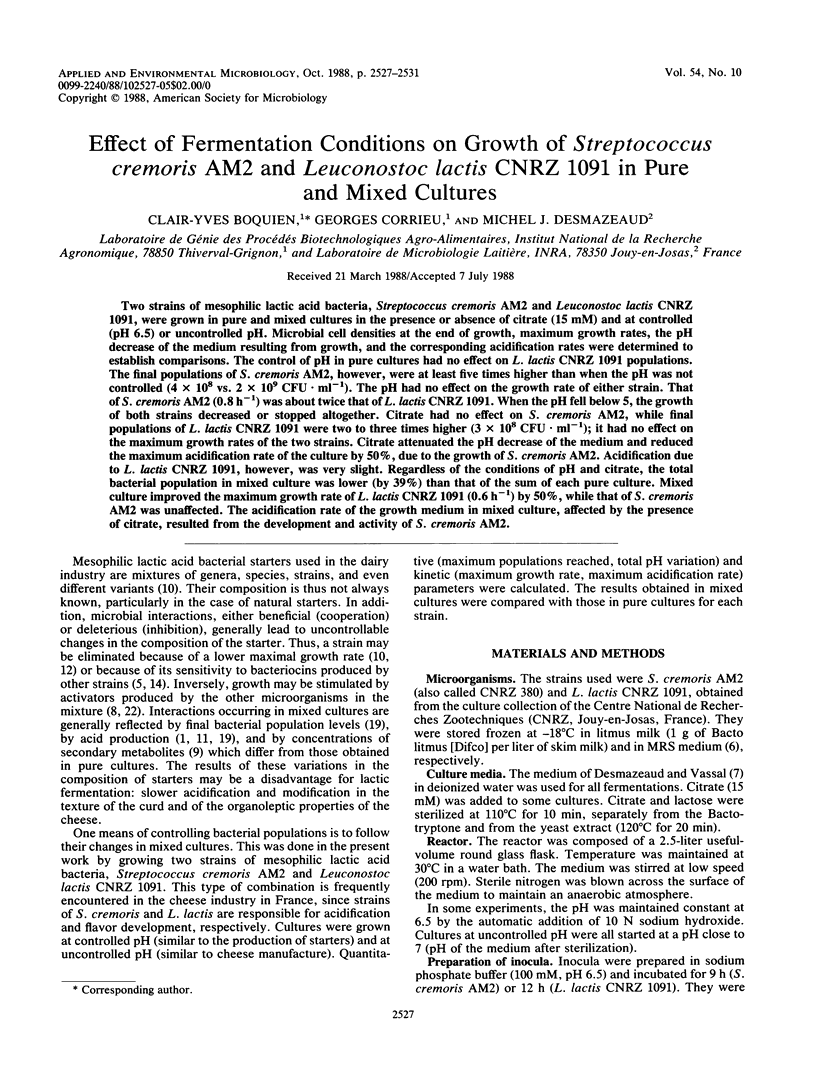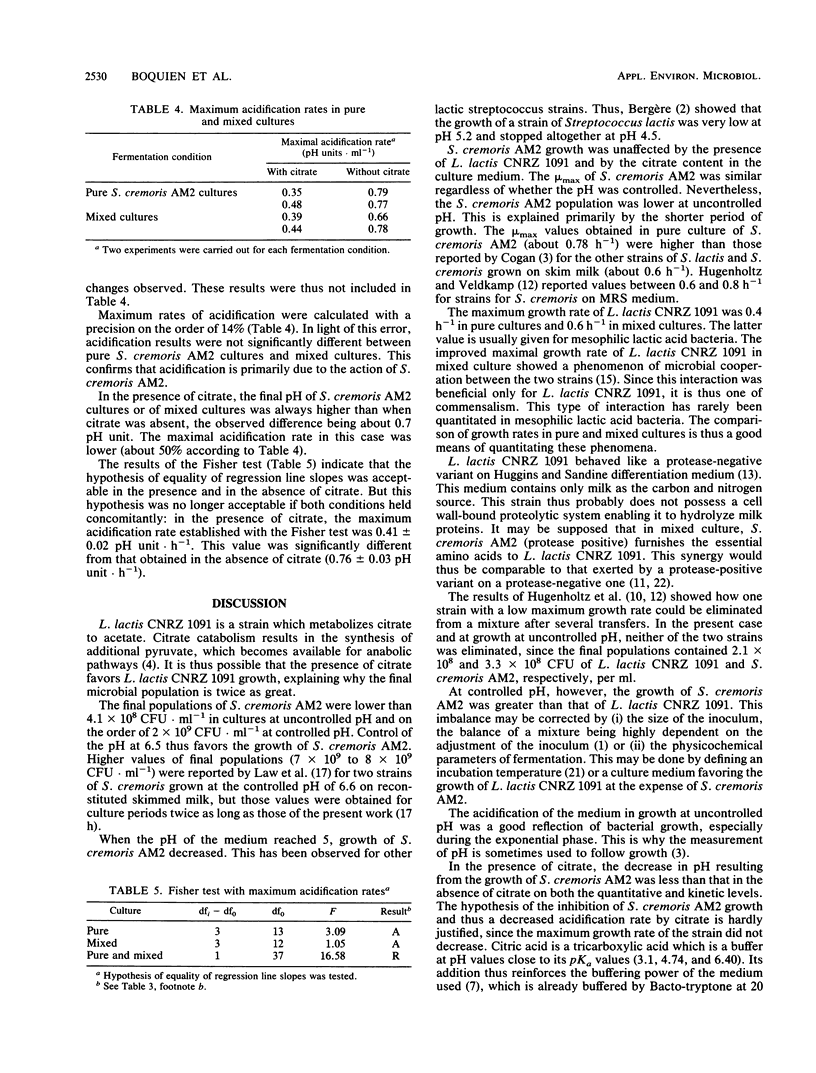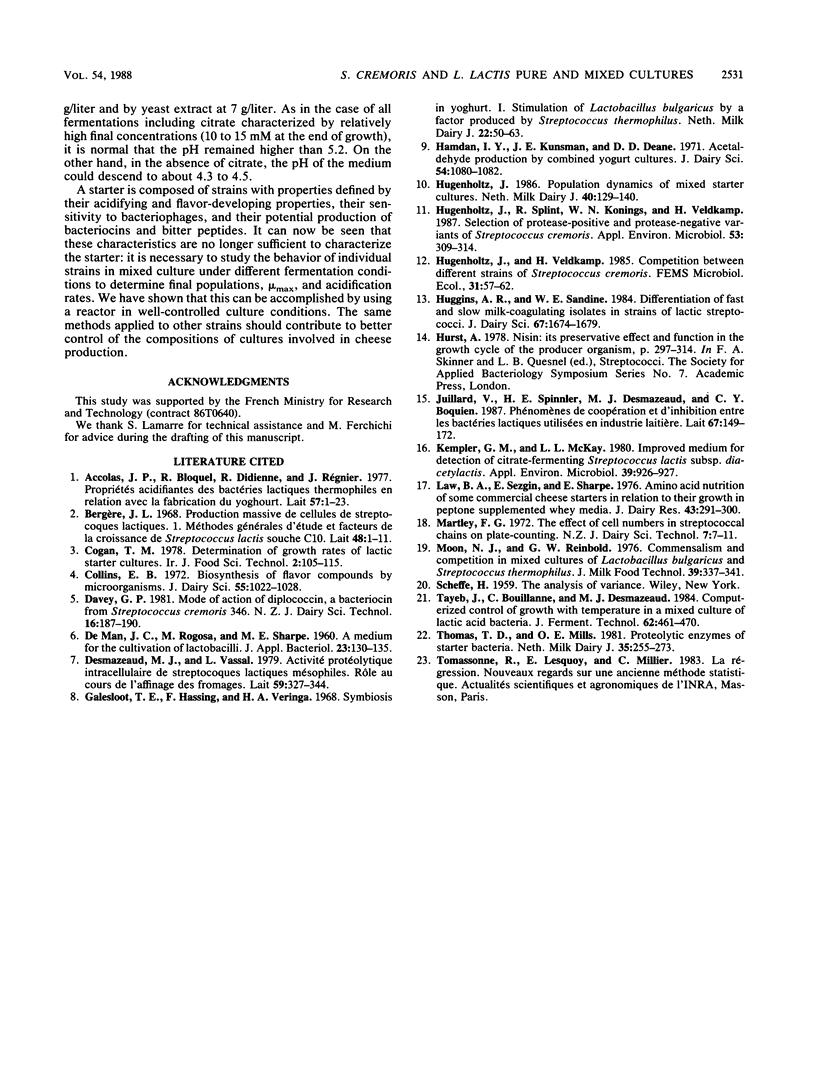Abstract
Two strains of mesophilic lactic acid bacteria, Streptococcus cremoris AM2 and Leuconostoc lactis CNRZ 1091, were grown in pure and mixed cultures in the presence or absence of citrate (15 mM) and at controlled (pH 6.5) or uncontrolled pH. Microbial cell densities at the end of growth, maximum growth rates, the pH decrease of the medium resulting from growth, and the corresponding acidification rates were determined to establish comparisons. The control of pH in pure cultures had no effect on L. lactis CNRZ 1091 populations. The final populations of S. cremoris AM2, however, were at least five times higher than when the pH was not controlled (4 × 108 vs. 2 × 109 CFU · ml−1). The pH had no effect on the growth rate of either strain. That of S. cremoris AM2 (0.8 h−1) was about twice that of L. lactis CNRZ 1091. When the pH fell below 5, the growth of both strains decreased or stopped altogether. Citrate had no effect on S. cremoris AM2, while final populations of L. lactis CNRZ 1091 were two to three times higher (3 × 108 CFU · ml−1); it had no effect on the maximum growth rates of the two strains. Citrate attenuated the pH decrease of the medium and reduced the maximum acidification rate of the culture by 50%, due to the growth of S. cremoris AM2. Acidification due to L. lactis CNRZ 1091, however, was very slight. Regardless of the conditions of pH and citrate, the total bacterial population in mixed culture was lower (by 39%) than that of the sum of each pure culture. Mixed culture improved the maximum growth rate of L. lactis CNRZ 1091 (0.6 h−1) by 50%, while that of S. cremoris AM2 was unaffected. The acidification rate of the growth medium in mixed culture, affected by the presence of citrate, resulted from the development and activity of S. cremoris AM2.
Full text
PDF




Selected References
These references are in PubMed. This may not be the complete list of references from this article.
- Hugenholtz J., Splint R., Konings W. N., Veldkamp H. Selection of Protease-Positive and Protease-Negative Variants of Streptococcus cremoris. Appl Environ Microbiol. 1987 Feb;53(2):309–314. doi: 10.1128/aem.53.2.309-314.1987. [DOI] [PMC free article] [PubMed] [Google Scholar]
- Hurst A. Nisin: its preservative effect and function in the growth cycle of the producer organism. Soc Appl Bacteriol Symp Ser. 1978;7:297–314. [PubMed] [Google Scholar]
- Kempler G. M., McKay L. L. Improved Medium for Detection of Citrate-Fermenting Streptococcus lactis subsp. diacetylactis. Appl Environ Microbiol. 1980 Apr;39(4):926–927. doi: 10.1128/aem.39.4.926-927.1980. [DOI] [PMC free article] [PubMed] [Google Scholar]


